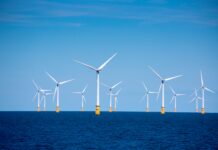Last Updated 2 days ago by Kenya Engineer
The Energy and Petroleum Regulatory Authority (EPRA) has released its much-anticipated Energy & Petroleum Statistics Report 2025, providing a comprehensive view of Kenya’s energy sector performance for the year ending June 30, 2025. The report reveals a sector that is growing steadily, with notable progress in renewable energy adoption and electricity demand.
Electricity Sector Growth
Kenya’s total installed electricity capacity now stands at 3,840.8 MW, comprised of 3,192.0 MW interconnected capacity, 603.8 MW captive capacity, and 45.0 MW off-grid capacity. Geothermal energy continues to be the backbone of Kenya’s electricity generation, contributing 25.92% of installed capacity. Hydropower accounts for 23.97%, thermal power 17.22%, solar PV 14.12%, and wind 11.98%.
This energy mix reflects Kenya’s clear commitment to sustainability. The government has reiterated its ambition to achieve 100% renewable electricity generation by 2030, positioning Kenya as a renewable energy leader in Africa.
Increasing Electricity Consumption
Kenya’s electricity consumption continues to rise. Peak demand reached 2,316.2 MW, marking a 6.38% increase from the previous year’s peak of 2,177 MW.
Consumption patterns show Nairobi leading with 2,415.44 GWh—accounting for 44.04% of total consumption—followed by the Coast region at 988.21 GWh (18.02%). Total electricity consumption rose from 5,205.79 GWh in the prior year to 5,484.54 GWh in the latest reporting period, reflecting steady economic and industrial growth.
Petroleum Sector Stability
Petroleum imports remained largely stable, with no major fluctuations reported. While detailed petroleum consumption trends and pricing dynamics are contained in the full report, the stability in imports suggests a balanced petroleum market for the time being.
Renewable Energy Expansion
The renewable energy sector has made significant strides. Solar PV capacity alone now accounts for 14.12% of total installed capacity. Government policy initiatives continue to focus on expanding renewable energy adoption, supported by strategic investments in infrastructure and incentives for clean energy projects.
Global Trends and Kenya’s Position
The International Energy Agency’s Global Energy Review 2025 reveals that renewable energy accounted for 38% of total energy supply growth globally, followed by natural gas (28%), coal (15%), oil (11%), and nuclear (8%). Kenya’s progress aligns with this global trend, reinforcing its leadership in the renewable energy transition.
Looking Ahead
The Energy & Petroleum Statistics Report 2025 underscores the dynamic transformation of Kenya’s energy landscape. As demand grows and renewable capacity expands, Kenya is well-positioned to meet its energy needs sustainably while contributing to global clean energy targets.
For energy stakeholders, engineers, and industry players, the report offers critical data and insights to guide planning, investments, and innovation. Kenya’s energy sector is not just powering homes and industries—it is energizing the nation’s journey toward a cleaner, greener future.
Read the full EPRA Energy & Petroleum Statistics Report 2025 here.

























